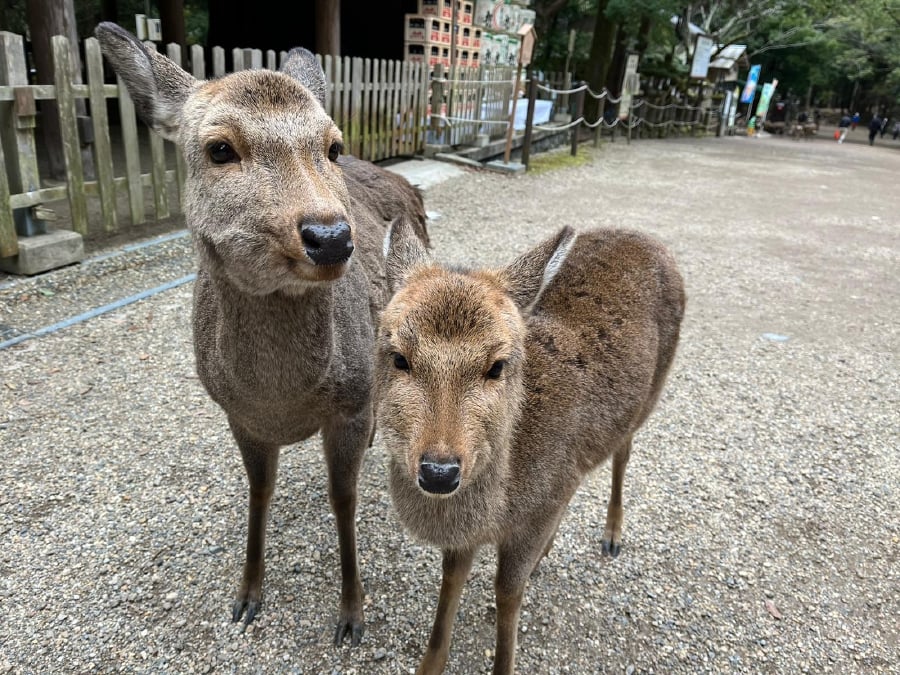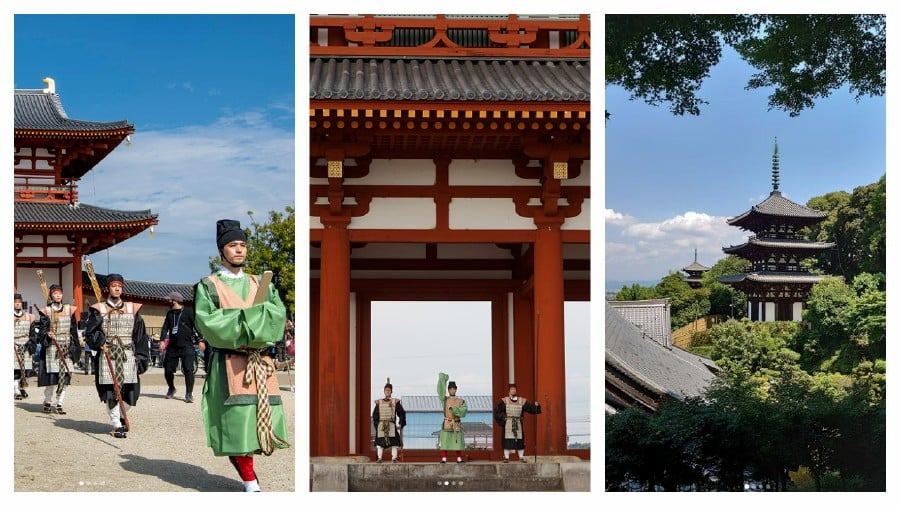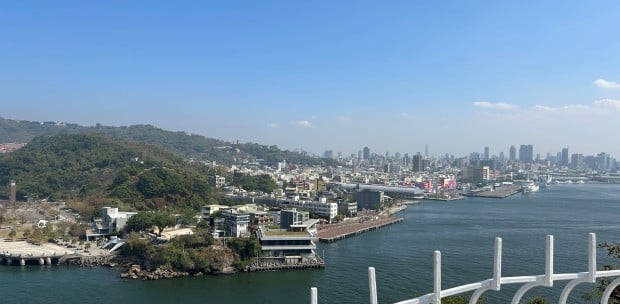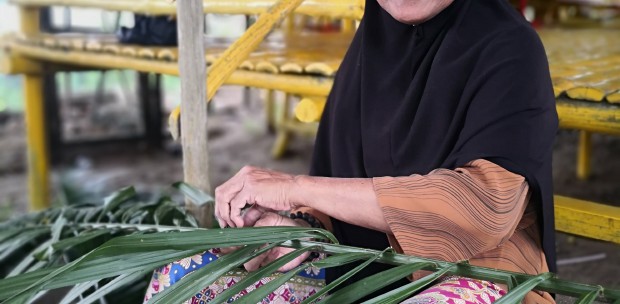NARA: Nara, the ancient capital of Japan and the birthplace of Japanese culture and civilisation, is set to blossom as 'the radiance of flowers in bloom' as described in the ancient Manyoshu poems.
Nara as it was originally named Yamato, is the spiritual heart of the Japanese people, where Manyoshu, the oldest anthology of Japanese ancient poems survived during the ancient Nara era circa 759.
As epitomised in 'The Tale of Genji', one of the world's first literature novels that were written in the 11th century by Murasaki Shikibu, a lady-in-waiting from the imperial Heian court, Nara was the site of the seven majestic temples.
At the eastern end of the Silk Road, Nara's culture was the syncretism of other Asian cultures, mainly from China and Korea.
With free-roaming deer as well as historical temples and shrines listed as World Heritage sites, Nara is accessible from Kyoto and Osaka by an approximately one-hour train ride.
SPIRITUAL TREASURES OF JAPANESE PEOPLE
According to the managing director of the Nara Visitors Bureau Yasuhiro Nakanishi, in Nara, visitors can find the spiritual treasures and culture of the Japanese people.
"The shrines and temples were constructed to pray for the country and for people's happiness to continue forever," he told Bernama recently in conjunction with the programme organised by the Japan External Trade Organisation (JETRO) to introduce Nara's culture and the uniqueness of its cuisine.
Nakanishi said the food culture started as gifts to the deities where the best food and sake were offered as dedication in religious ceremonies in the shrines which were then shared with people involved in the prayer offering.
"This tradition of dedication as worship in the religious ceremony of Shintoism and then in Buddhism that came to Japan from India and China later on, has evolved in the lives of the Japanese people.
"This spiritual form is still preserved in Nara as in the Kofukuji temple which is also known as 'The Temple of Happiness'," he said, adding that the temple is one of Japan's oldest and most powerful temples and listed as a World Heritage site.
He further explained that another World Heritage site is the Hōryū-ji temple also known as the 'Flourishing Temple' in Ikaruga, which is the world's oldest wooden building constructed in the seventh century with the blossoming of early Buddhism in Japan.
"The pagoda in Horyu-ji temple that was rebuilt in year 680, still stands today," he said.
Besides that, The Todaiji Temple, the biggest temple in Japan during the Nara period was once one of the powerful Seven Great Temples and is another monumental iconic symbol of the influence of Buddhism.
Nakanishi said, the temple is 'home' to one of the world's largest bronze Buddha statues, as the palm of the right hand is 2.56 metres in length, which is larger than the average human being.
"It was believed that everything in Japan started here in Nara, including the Shinto religion.
"Even if the history of Nara as a capital of Japan was only established for a short period before it was moved to Heian-kyo is now known as Kyoto, Nara still preserves its spiritual worship in temples and shrines," he added.
THE ENDURING LEGACY OF THE DEER IN NARA
In Japan, nature such as the mountains, rivers and woods is respected and venerated in shrines and temples.
"While in Nara during ancient times, the Buddhist temples and Shinto shrines that co-existed together had more power compared to other prefectures where the samurai, daimyo and shogun wielded more power," he said.
As in the Kasuga-Taisha shrine, a Shinto shrine located on the sacred Mount Mikasa, in the eastern part of Nara Park, the deer are symbols of the people's belief that these animals are messengers of God in the shrine and are cherished in harmony with people.
"And so the deer in Nara, have remained in harmony even after 1,300 years, when the Kasuga-Taisha shrine was constructed. There are over 1,000 deer now in Nara Park and there is a history of symbiosis between humans and deer," Nakanishi said.

THE TEMPLE ON THE ENCHANTED BODAISEN MOUNTAIN
From the Kasuga-Taisha or the shrine of the sacred deer, the writer steps into the Shoryakuji temple on the enchanted Bodaisen mountain in Nara.
It is the temple, built more than 1,000 years ago, where visitors can have a close fantasy encounter that replicates a picturesque setting of the 'Lord of the Rings' movie experience with the temple surrounded by nature, streams and the sound of caressing wind on the trees.
Shoryakuji, a temple of the Buddhist Bodaisen Shingon sect, is the birthplace of Japan's refined sake more than 600 years ago.
Chief Priest Koshin Ohara said the Japanese root culture is preserved here in this temple with the restoration of the temple's building after the fire that broke out during the civil war between the Heike or samurai clans and the Genji imperial house families during the 12th century.
"Powerful temples such as the Todaiji and Kofukuji temples that were rebuilt had also burnt down during the war and Shoryakuji temple is not an exception," he said.
Shoryakuji temple is located in the most favourable place in the isolated mountain, where no noise can be heard for traditional musical instruments artisans to devout their skill.
Ohara said it is also the place where the traditional skill of making sake which is integral in the Japanese culture is developed here in this temple.
"While Japanese sake making originally came from China, from priests who went to China to study Buddhism during ancient times, the taste was adapted to suit the Japanese style.
"Sake and tea are so integral in the Japanese culture for people to gather in the community to have a drink and connect as well as communicate with one another," he explained.
ROOTS OF JAPANESE FOOD CULTURE
High in the mysterious mountain in Sakurai city, in the centre of the southeast region of Nara prefecture, is where visitors will step into the mystical ancient town that has also been integral to Japanese culture.
The 30-metre majestic Torii Tower at the base of the sacred Mount Miwa, towering below the skies of the city, is the gateway to the spiritual realm where the kami (deity) from the mountain is enshrined and revered in the Ohmiwa shrine, known as one of the oldest shrines in Japan.
Koji Ikeda, planning department manager of Ikeri Co Ltd, producer of somen noodles in Sakurai city shared the history of Nara's somen noodles, the super-thin snow-whit-like noodles during a visit to the somen noodle factory in Sakurai city.
He said it has its connection with the history in the Ohmiwa shrine when it was introduced by a priest to serve as a food staple for the people during famine about 1,300 years ago.
"The climate here in Sakurai is ideal for making somen. Ikeda's somen noodle factory maintained the traditional hand-pull technique of somen noodles that have been sold in many countries including Malaysia, for over 170 years," he said.
Another culinary sensation from Nara, the kakigori or shaved ice dessert, was believed to have originated during the time of the Heian period from the year 794 to 1,185 when blocks of ice were served with sweet syrup concoction were presented to the Emperor.
Nara's popular kakigori shop, Housekibaco shop owner, Keiko Okada said the dessert is based on Nara's ancient food culture from the Himuro shrine.
"At the annual Himuro Shirayuki Matsuri or the shaved ice festival in Himuro shrine, many people enjoyed the kakigori during the festival.
"The ethereal tantalising charm of kakigori, of sweet syrup made from strawberries, persimmon and other flavours on top of a fluffy mound of shaved ice, may soon woo the hearts of Malaysians," she said, adding that they would prefer to introduce kakigori to Malaysia and tailor it to suit the Malaysian taste by making use of local ingredients.
Another icy attraction in Nara is the winter illumination event in Nara Park, held in February every year, where colourful dreamy lights create a fantasy sight with orange light deer effigies on cold winter nights.
The bright blue light in the park brings visitors to the ethereal world known as the Happiness Corridor NaraRurie where blue lights known as 'rurie' or blue lapis lazuli stone in Japanese which are treasured by ancient Japanese people to bring happiness and serenity, create a magical romantic ambience during the Valentine celebrations.
As described by many ancient Haiku poets, the ethereal charm of Nara blossoms now. For further information on Nara please visit https://yamatoji.nara-kankou.or.jp/ – BERNAMA
Fly comfortably to Nara, Japan, with this Malaysia Airline promo code.





